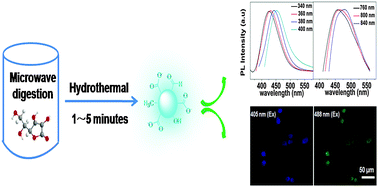A novel rapid and green synthesis of highly luminescent carbon dots with good biocompatibility for cell imaging†
Abstract
A novel simple and green method was developed to synthesize highly luminescent carbon dots using ascorbic acid as a carbon source in aqueous solution. The as-prepared C-dots showed downconversion and upconversion fluorescence properties. They were applied to imaging of human breast cancer cells and normal human mammary cells, showing low cytotoxicity and good biocompatibility.


 Please wait while we load your content...
Please wait while we load your content...